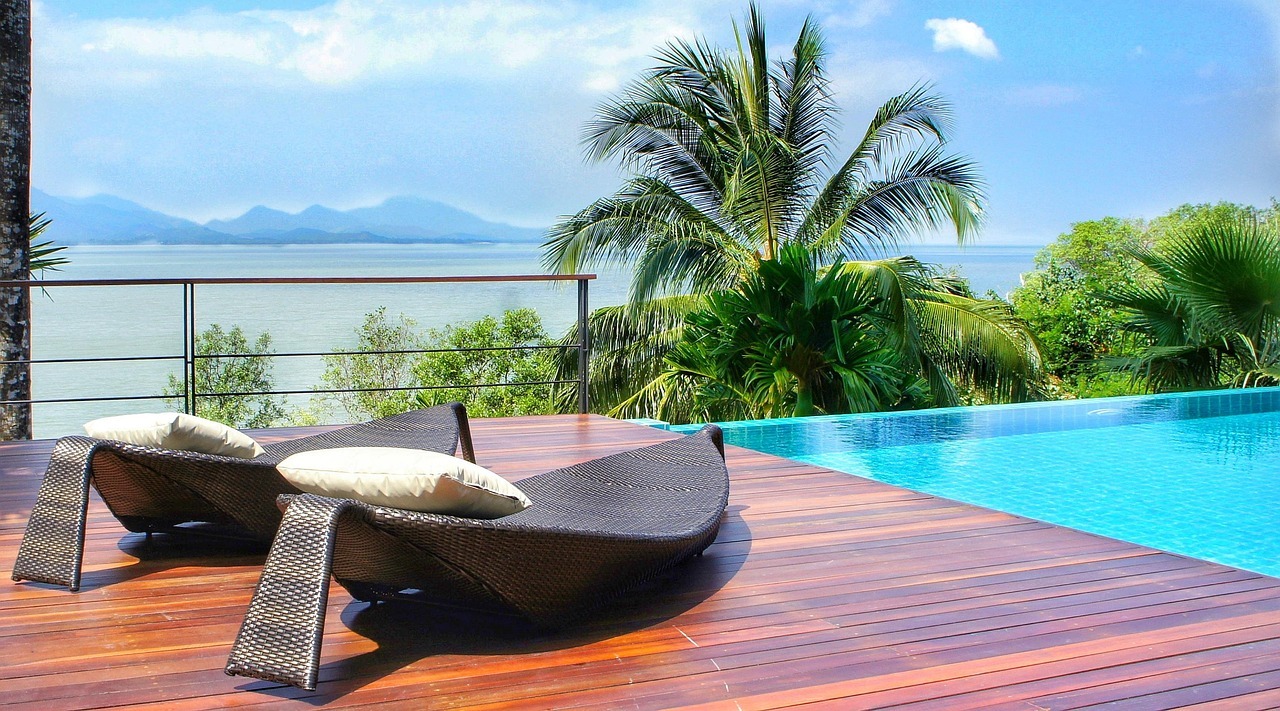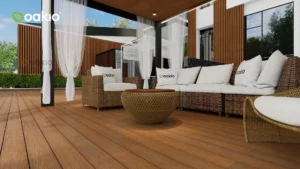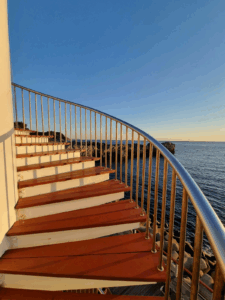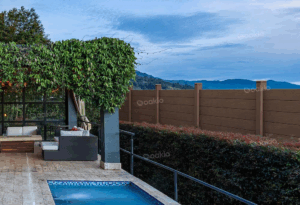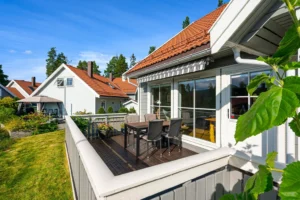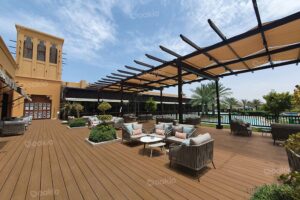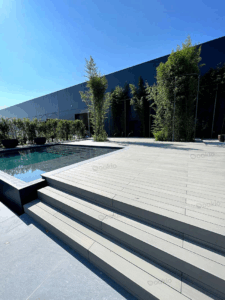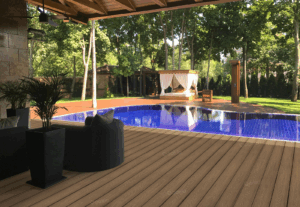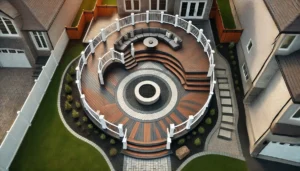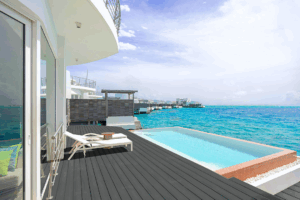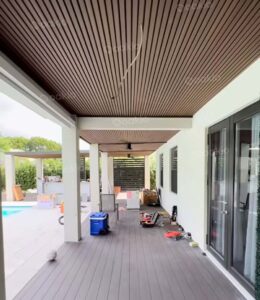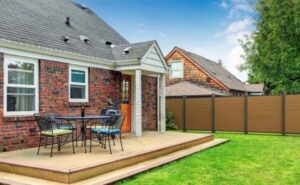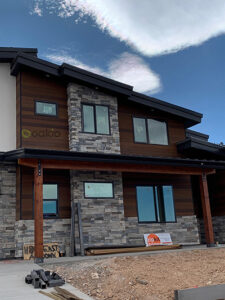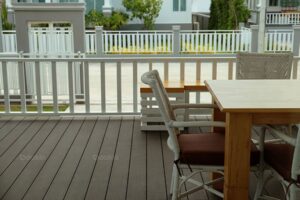What Do I Need to Know Before Building WPC Flooring Around My Swimming Pool?
WPC (Wood-Plastic Composite) is gaining ground as a top choice for poolside flooring. Combining wood fibers and plastic, pool WPC flooring offers the aesthetic appeal of timber with the strength of synthetic materials. This makes it a practical and stylish option for modern poolside environments.
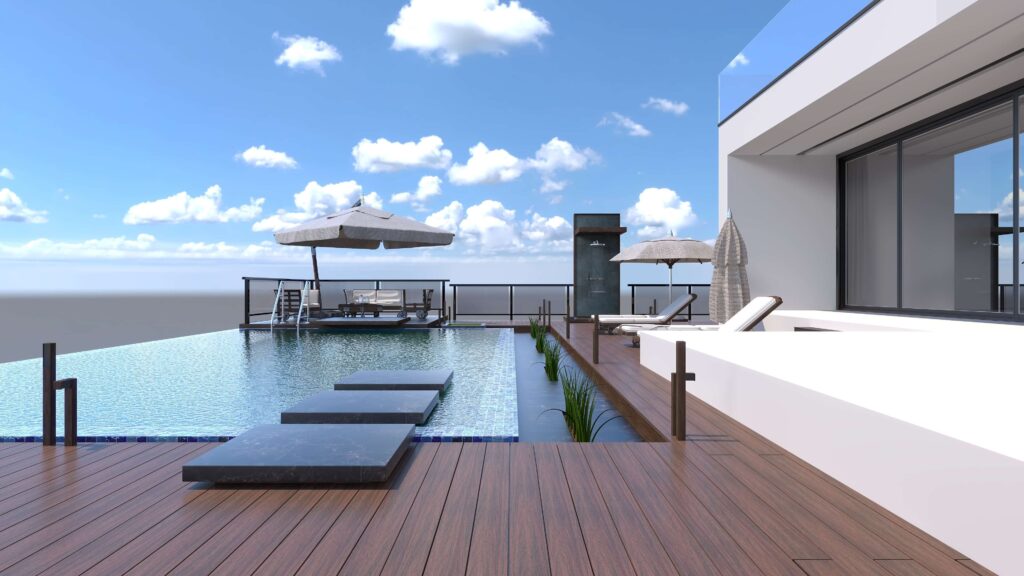
Whether you’re a homeowner, contractor, or designer, knowing what to look for when selecting and installing WPC flooring for swimming pool areas is key. This article will walk you through the major considerations, benefits, and best practices to help you make your poolside upgrade worth it.
What is WPC and Why is it Popular for Pools?
Wood-plastic composite combines wood fibers and plastic—typically PVC—to create a robust, weather-resistant material. This composite merges the natural look of wood with the resilience of synthetic polymers, making it ideal for outdoor use
Compared to traditional wood or stone, WPC decking swimming pool solutions are more durable, less prone to cracking or warping, and require significantly less upkeep. Its non-porous surface resists water damage, while the finish maintains its color and structure even under prolonged sun exposure.
These qualities make swimming pool WPC deck installations a smart choice for modern outdoor design. WPC panels are also textured, meaning slips and falls will be reduced. Some panels even feature dedicated anti-slip textures to minimize injuries, particularly near the pool. Nevertheless, it is important to practice safe pool behaviors to prevent injuries.
Key Benefits of WPC Flooring Around Pools
- Moisture & Chlorine Resistance
One of WPC’s standout features is its exceptional resistance to water, chlorine, and saltwater. It doesn’t swell, rot, or degrade like natural wood, making it perfect for poolside environments.
- Slip Resistance
Safety around pools is critical. WPC surfaces are engineered with textured, slip-resistant finishes that provide a reliable grip, even when wet—ideal for families, public places, and especially for children who like to play around.
- Durability
WPC withstands constant exposure to UV rays, temperature swings, and heavy foot traffic without fading or splintering, which extends its service life beyond most natural materials. A testament to a WPC’s durability is the offer of decades of warranty periods.
- Low Maintenance
No need for sanding, sealing, or staining. Routine cleaning with soap and water is usually enough, making upkeep effortless. If minimal wear and tear signs are present, these are usually repaired with a cheap WPC repair kit.
- Aesthetic Versatility
Available in various colors, grain patterns, and finishes, pool WPC can match virtually any design theme—from tropical retreats to minimalist modern homes. Though it can’t imitate the versatility of natural wood aesthetically, it’s actually getting closer.
Important Considerations Before Installing a Pool WPC
Location & Layout
Identify the exact locations for the Wood Plastic Composite (WPC) installation, such as pool decks, walkways, or lounging areas. Each zone may have unique spacing and drainage requirements essential for both functionality and aesthetics.
Substructure
The substructure is essential. We advise using moisture-resistant frameworks such as aluminum or galvanized steel, or even reinforced concrete, as the gold standard. Wood, especially untreated wood, should be avoided, as it may rot even if the WPC surface remains intact.
Drainage
Make sure your design includes an effective drainage plan. Poor drainage can lead to water accumulation, which may cause long-term damage or safety hazards. According to the International Swimming Pool and Spa Code, there should be a minimum deck slope requirement to prevent water accumulation, so take note of this.
Installation Skills
While interlocking WPC systems are easy to install for DIY enthusiasts, poolside applications often require professional installation to ensure proper leveling, spacing, and anchoring.
Material Quality
Not all WPC is created equal. Choose products with anti-fade, anti-slip certifications, and warranties to ensure durability and peace of mind. Oakio offers 25-year warranty periods for most of its product line—a testament to their confidence in their products.
Budget
While WPC flooring for swimming pool areas may carry a higher upfront cost than wood, the long-term savings on maintenance and replacement are substantial. Consider it an investment in safety and aesthetics.
Installation Best Practices
Measure carefully and order extra materials to cover cutting waste and future repairs. Prepare the surface by leveling and clearing it of debris. When all’s good, install the substructure first. Use clips to secure planks, ensuring uniform spacing for expansion. Add edge trims and finishing pieces to seal the design.
But before you finish the project, don’t overlook expansion gaps. Inadequate substructure or poor drainage can lead to long-term issues like warping, shifting, or mold underneath. It’s important to remember that WPC is water-resistant, not water-proof.
Maintenance Tips for Pool WPC Flooring
- Routine Cleaning
Use a soft-bristle broom and mild detergent for routine cleaning. It’s important to avoid pressure washing, especially at high settings, as this can strip away protective surface coatings and potentially damage the material. - Dealing with Stains
For chlorine or salt stains, clean immediately with diluted vinegar or specialized WPC cleaners. Always refrain from using bleach or other harsh chemicals, as they can compromise the integrity of the material and cause discoloration. - Inspection
Inspect joints and fasteners periodically. Look for signs of wear, movement, or structural weakness in the substructure. Additionally, examine the substructure for any structural weaknesses like rotting or warping, as addressing these issues early can prevent more extensive damage down the line. - Seasonal Care
If you’re in a four-season region, sweep away leaves and debris before winter. For increased protection during extended periods when the deck will not be in use, consider covering it with a breathable, weather-resistant tarpaulin to shield it from the elements.
WPC vs. Other Pool Surround Materials
| Feature | WPC | Wood | Stone/Tile |
| Maintenance | Low | High | Medium |
| Slip Resistance | High | Medium | Low to Medium |
| Installation | Moderate | Moderate | Complex |
| Comfort | Cool underfoot | Warm | Can get very hot |
| Lifespan | 15-25 years (with care) | 5-10 years | 10-20 years |
Conclusion
Pool WPC offers a winning blend of beauty, safety, and durability. Whether you’re upgrading an existing pool deck or designing one from scratch, WPC is a practical and modern solution. Assess your needs carefully, follow best practices, and don’t hesitate to consult a pro to get it right the first time.
If you want to start building your swimming pool WPC deck, get in touch with Oakio today, and let’s get started on your project!
Trending Reading
What Are the Differences Between the WPC Board and PVC Board?
[2025 Update] How Long Does WPC Decking Last?
